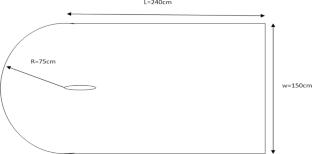Improvement in aerodynamic efficiency of trainer aircraft wing using co flow jet method
Q3 Earth and Planetary Sciences
引用次数: 0
Abstract
The objective of this paper is to enhance the aerodynamic performance of trainer aircraft wing using active flow control method of co flow jet (CFJ). In this numerical study, free stream velocity of 20 m/s and k epsilon turbulence model is used to compare baseline and CFJ aerofoils with different angles of attack (AOA). This work introduced CFJ method into the trainer aircraft wing to improve the aerodynamic performance by controlling the boundary layer over it at different AOA and at the same time to reduce the take-off landing distance. The obtained results show that the stalling AOA improved by 40% and lift coefficient increased by 52%. The same method could be used to all trainer aircrafts.

利用共流喷射法提高教练机机翼的气动效率
本文旨在利用共流喷气(CFJ)的主动流控制方法提高教练机机翼的气动性能。在这项数值研究中,采用 20 m/s 的自由流速度和 k epsilon 湍流模型,比较了不同攻角 (AOA) 下的基线气膜和 CFJ 气膜。这项工作将 CFJ 方法引入到教练机机翼中,通过控制不同 AOA 下机翼上的边界层来改善气动性能,同时缩短起飞着陆距离。结果表明,失速 AOA 提高了 40%,升力系数提高了 52%。同样的方法可用于所有教练机。
本文章由计算机程序翻译,如有差异,请以英文原文为准。
求助全文
约1分钟内获得全文
求助全文
来源期刊

Aerospace Systems
Social Sciences-Social Sciences (miscellaneous)
CiteScore
1.80
自引率
0.00%
发文量
53
期刊介绍:
Aerospace Systems provides an international, peer-reviewed forum which focuses on system-level research and development regarding aeronautics and astronautics. The journal emphasizes the unique role and increasing importance of informatics on aerospace. It fills a gap in current publishing coverage from outer space vehicles to atmospheric vehicles by highlighting interdisciplinary science, technology and engineering.
Potential topics include, but are not limited to:
Trans-space vehicle systems design and integration
Air vehicle systems
Space vehicle systems
Near-space vehicle systems
Aerospace robotics and unmanned system
Communication, navigation and surveillance
Aerodynamics and aircraft design
Dynamics and control
Aerospace propulsion
Avionics system
Opto-electronic system
Air traffic management
Earth observation
Deep space exploration
Bionic micro-aircraft/spacecraft
Intelligent sensing and Information fusion
 求助内容:
求助内容: 应助结果提醒方式:
应助结果提醒方式:


